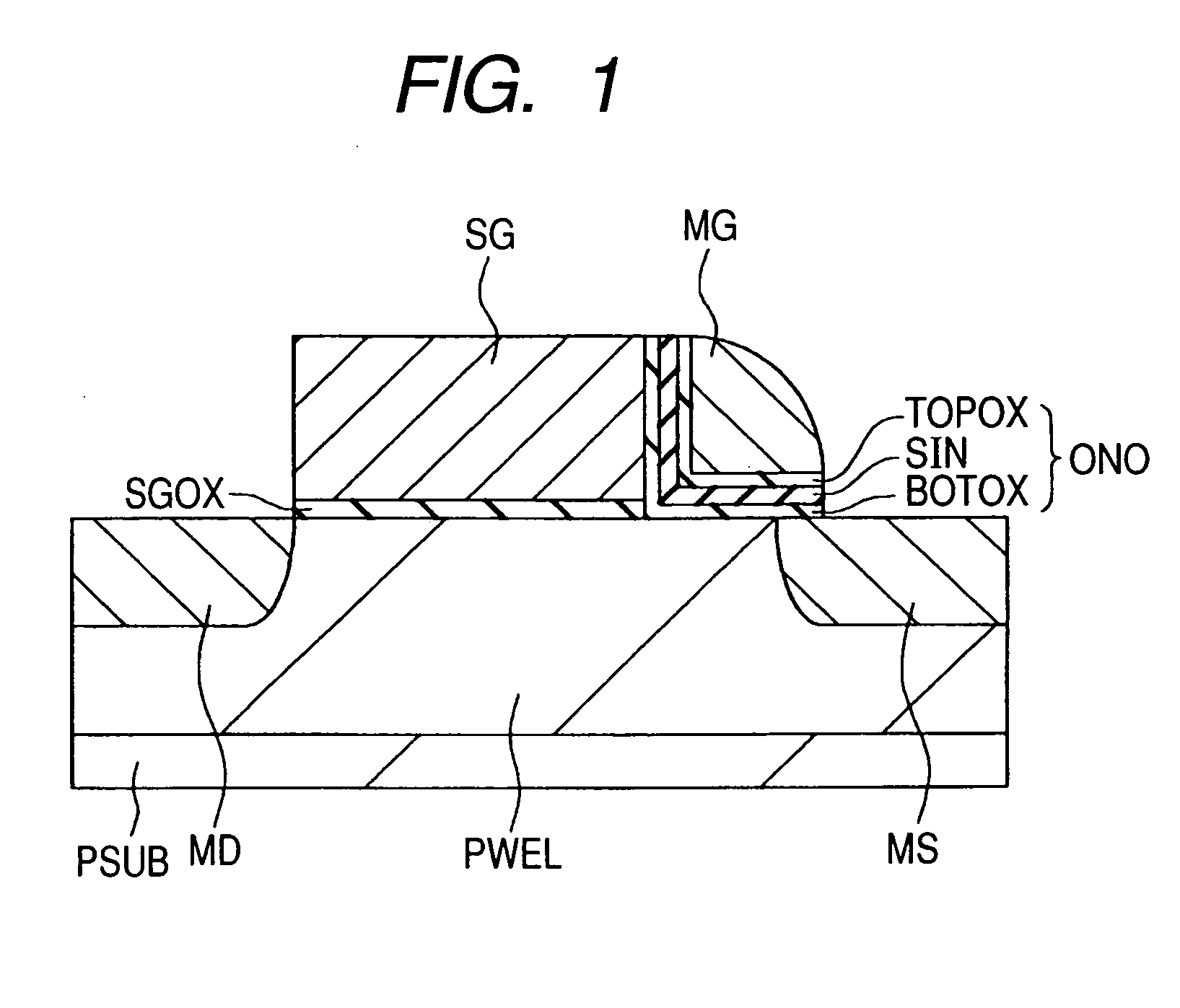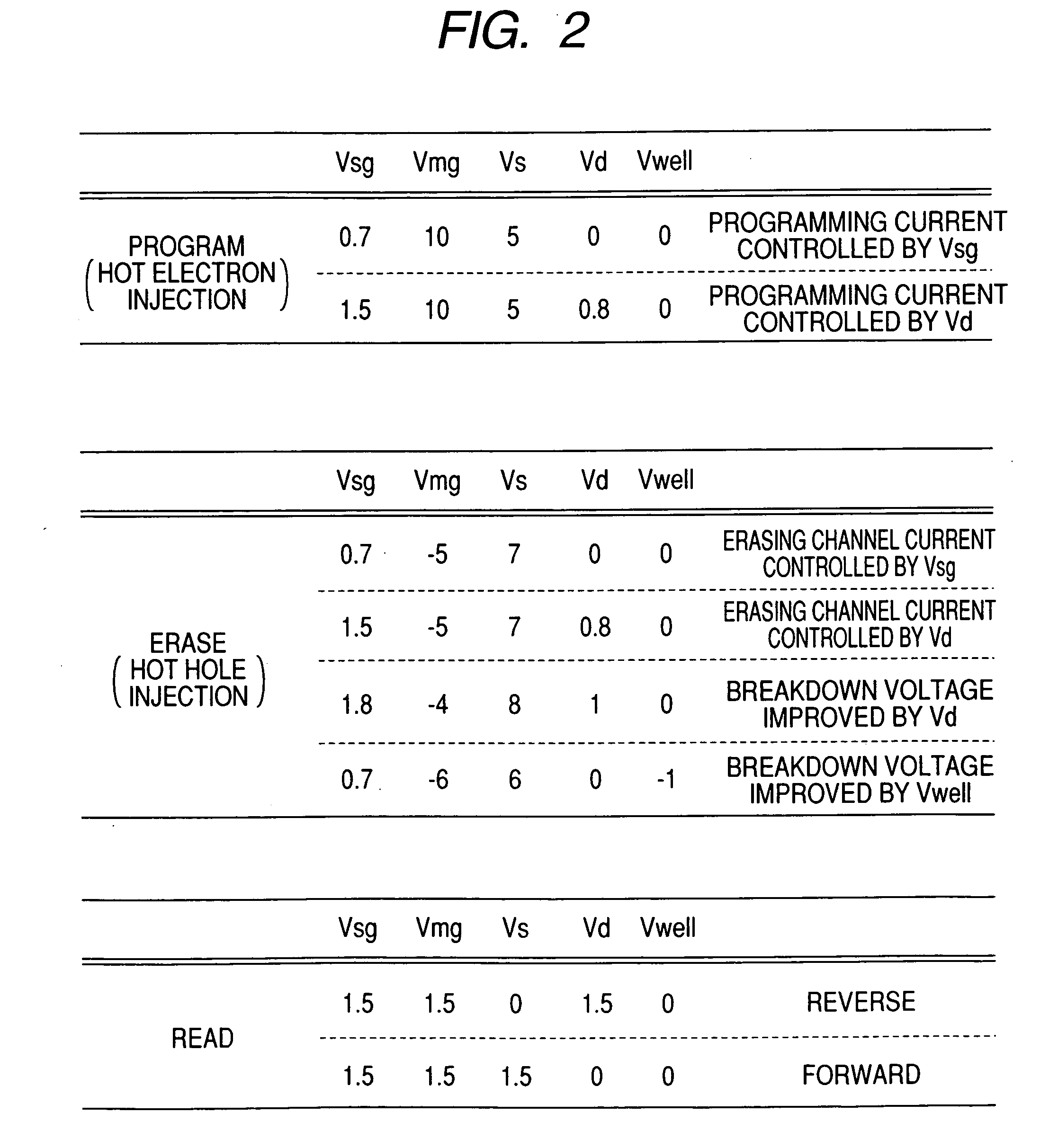Nonvolatile semiconductor memory device
a nonvolatile, memory device technology, applied in semiconductor devices, transistors, instruments, etc., can solve the problems of low erase speed, restricted data retention characteristics, and increased chip cost, so as to improve the performance and reliability of a nonvolatile semiconductor memory device, and avoid characteristic deterioration
- Summary
- Abstract
- Description
- Claims
- Application Information
AI Technical Summary
Benefits of technology
Problems solved by technology
Method used
Image
Examples
Embodiment Construction
[0069] Embodiments of the present invention will now be described with reference to the accompanying drawings. Elements having the same functions are assigned the same reference numerals in all the drawings depicting the embodiments, and will not be repeatedly described. In the following description of the embodiments, identical or similar portions will not be repeatedly described unless necessary.
[0070] The present invention uses a trap type insulator (insulation film that can store an electrical charge) for a charge storage section. Therefore, the following description of the embodiments assumes the use of a memory cell that employs a trap type insulator based on an NMOS (n-channel MOS) transistor. The polarities (application voltage polarity and carrier polarity for programming, erasing, or reading) designated in the following embodiments are used in order to describe operations of a memory cell that is based on an NMOS (n-channel MOS) transistor. If the memory cell is based on ...
PUM
 Login to View More
Login to View More Abstract
Description
Claims
Application Information
 Login to View More
Login to View More - R&D
- Intellectual Property
- Life Sciences
- Materials
- Tech Scout
- Unparalleled Data Quality
- Higher Quality Content
- 60% Fewer Hallucinations
Browse by: Latest US Patents, China's latest patents, Technical Efficacy Thesaurus, Application Domain, Technology Topic, Popular Technical Reports.
© 2025 PatSnap. All rights reserved.Legal|Privacy policy|Modern Slavery Act Transparency Statement|Sitemap|About US| Contact US: help@patsnap.com



